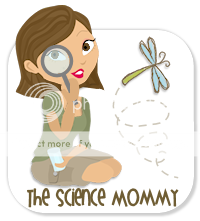Ages: This is best for Big Kid Scientists
 Materials:
Materials: Food Coloring
Sugar
Small Containers to mix solutions
Eye droppers or pipettes
Film canisters
Procedure:
- Create four different sugar - water solutions, each with a different amount of sugar, but the same amount of water. We used 1 cup of warm water with 1, 2, 3 and 4 tablespoons of sugar
- Label each sugar solution with the amount of sugar. We wrote on the plastic container with a dry erase pen (it washes off very easily)
- Once each solution is stirred until all the sugar has dissolved, add a couple drops of food coloring. Each solution should be a different color
- The purpose of the exploration is to determine the relative density of each solution. Kid Scientists carefully try to layer the solutions into their film canisters. Adding the most dense solution first will allow a less dense solution to layer. Adding a less dense solution first causes the two to mix.

- Encourage your Kid Scientists with questions like...What happens when you put red on top of blue? What will happen if green is on top of yellow? Predict what happens if blue is in first, what would layer on top? What did you figure out about the green solution? The blue solution?
- Extension...try the same exploration with salt water solutions. What do you notice? What are the similarities? What are the differences?






























2 Science Moms have commented...:
I recently found your blog and am excited about using some projects with my kids. I am curious about some general number age guides to go along with your Big and Little recommendations. Thanks!
Kori
Kori - Thanks for joining...I couldn't get to your email so I'll respond to your comment here. I leave the ages general because kids vary...and parents vary in their own comfort levels. In general Big Kids can read and Little Kids can't yet read. There is also a safety issue for really Little Kids who still taste their explorations!
Post a Comment